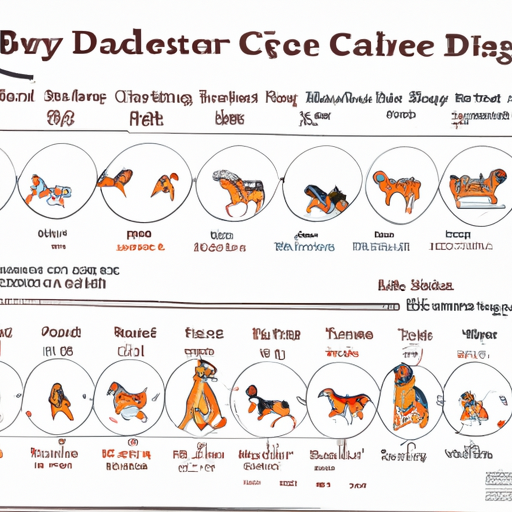Understanding the Canine Heat Cycle
You may notice that your furry friend is behaving a little differently lately. Restlessness, increased urination, and swollen vulva might be signs that your dog is in heat. But what exactly does it mean for a dog to be in “heat”? This term refers to the canine estrous cycle, a period when female dogs are receptive to mating.
The length of this cycle can vary greatly among different breeds and individual dogs. On average, it occurs once every six months and lasts for approximately two to four weeks. However, small breed dogs could go into heat more frequently, as often as three or four times a year, while large breed dogs might only go into heat every 12-18 months.
The Four Stages of the Canine Heat Cycle
Understanding the stages of a dog’s heat cycle can help you better care for your pet during this time. The cycle is divided into four stages:
-
Proestrus: This is the beginning stage of the heat cycle, usually lasting between 7 to 10 days. During this phase, your dog may show signs of being in heat, but she is not yet ready to mate.
-
Estrus: This is the stage where your dog is ready to mate. It typically lasts 5 to 9 days, but can be as short as 3 days or as long as 21 days.
-
Diestrus: This stage lasts about 6 to 10 weeks. If mating has occurred, this is the pregnancy period. If not, it’s a resting phase.
-
Anestrus: This is the quiet phase, lasting anywhere from 4 to 7 months, where the dog’s body recuperates and prepares for the next heat cycle.
Recognizing the Signs of Heat in Dogs
Being able to spot the signs of heat can help you better manage your dog’s cycle and potentially avoid unwanted pregnancies. Here are some common signs:
- Swollen vulva
- Bloody or straw-colored discharge from the vulva
- Frequent urination
- Changes in behavior such as restlessness or clinginess
What to Do When Your Dog is in Heat
As a caregiver, you might feel concerned about how to handle your dog’s heat cycle. Here are some suggestions:
-
Keep her indoors: To avoid unwanted attention from male dogs and potential pregnancies, keep your dog inside as much as possible during the heat cycle.
-
Use doggie diapers: Doggie diapers can help manage the discharge and keep your home clean.
-
Avoid stressful situations: Your dog might be more sensitive during this time. Try to keep her environment calm and stress-free.
Spaying Your Dog
Spaying your dog is a surefire way to prevent heat cycles and unwanted pregnancies. It is also beneficial for their health, reducing the risk of certain cancers and infections. Consult with your vet to determine the best time for this procedure.
| Benefits of Spaying | Risks of Not Spaying |
|---|---|
| Prevents unwanted pregnancies | Risk of pyometra (infection of the uterus) |
| Reduces risk of mammary cancer | Risk of mammary cancer |
| Eliminates heat cycles | Nuisance of heat cycles |
FAQ
Q: How often do dogs go into heat?
A: On average, dogs go into heat about once every six months, but this can vary based on breed and individual dog.
Q: How long does a dog’s heat cycle last?
A: A dog’s heat cycle typically lasts two to four weeks.
Q: Can I walk my dog when she’s in heat?
A: Yes, but avoid areas frequented by male dogs to prevent unwanted attention.
Q: When should I spay my dog?
A: The best time to spay your dog is often before their first heat cycle, but consult with your vet for the best advice.



